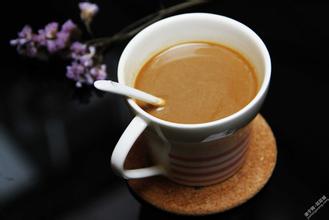Burundian Coffee Flavor description Taste Variety characteristics Grinding scale Fine Coffee Bean Manor
Burundian Coffee Flavor description Taste Variety characteristics Grinding scale Fine Coffee Bean Manor
The capital Bujumbura (Bujumbura), with a population of 393000 (2012), is the political, economic and cultural centre of Burundi. Bujumbura was formerly known as Wusumbura. In the west of the border, the north bank at the eastern end of Lake Tanganyika. The average annual temperature is about 22 to 26 ℃. With a pleasant climate, beautiful scenery, lush trees, flowers and expanding tourism facilities, the city is a developing tourist city. There are many plateaus and mountains in Burundi, most of which are composed of the plateau on the east side of the East African Rift Valley, with an average elevation of 1600 meters above sea level, which is known as the "mountain country". According to the topography of Burundi, Burundi can be divided into three regions: the western plain, along the Ruzizi River, the Rift Albrtine plain, at 774 to 1000 m above sea level; the central and western mountains, with an average elevation of 1700 m, with the highest peak located in Heha in the southeast of Bujumbura, at 2670 m above sea level; and in the east-central plateau region, at 1000 to 2000 m above sea level, Burundi's mineral deposits are mainly nickel, peat, cerium, tantalum and tin. The nickel deposit is about 300 million tons and the taste is 1.5%. Peat reserves are about 500 million tons. Phosphate reserves 30.5 million tons, taste 11.1-12.6%. The limestone reserves are 2 million tons. Gold deposits are widely distributed, with large reserves in the northwest, and most of them were smuggled abroad in the 1930s. In 1993, forest coverage was 5% of the land area, but it was rapidly reduced to 3% due to fire and deforestation.
There are different flavors of coffee, so you can't drink three or four cups in a row like tea or cola, but the formal coffee cup is the best. Ordinary coffee to 80-100cc for the right amount, sometimes if you want to drink three or four cups in a row, then it is necessary to dilute the concentration of coffee, or add a lot of milk, but still take into account the degree of physical needs, to add or reduce the concentration of coffee, that is, do not cause greasy or nauseous feeling, and in the allocation of sugar might as well be more changes to make the coffee more delicious. Drinking hot coffee is a necessary condition for tasting delicious coffee, even on a hot summer day, it has the same flavor: mellow taste, rich aroma and excellent acidity
Suggested baking method: medium to deep baking
★★: good
Features of Burundian coffee:
Burundi has the most diverse and successful coffee industry in the world, and has its own characteristics. Burundian coffee is aromatic and has excellent acidity. Burundian coffee producing areas:
Coffee in Burundi is now grown only on small farms. Almost all coffee produced in Burundi is Arabian coffee beans, while coffee trees in Ngozi are planted at an altitude of more than 1200 meters.

Important Notice :
前街咖啡 FrontStreet Coffee has moved to new addredd:
FrontStreet Coffee Address: 315,Donghua East Road,GuangZhou
Tel:020 38364473
- Prev

Introduction to Manor treatment of Rosa Variety characteristics in Panamanian Coffee Bean producing area
Introduction to his father's coffee business in Santa Clara, Volcan. Hartman Manor was established in 1940. It can be said that Hartmann Manor is the pioneer and representative of Volcan Coffee producing area. Ninety Plus Rose Summer Manor is all from Volcan producing area, but Hartman is not only Rose Summer, so it is recommended here.
- Next

Introduction to the method of taste treatment of Latin American coffee beans
Taste description of Latin American coffee beans varieties introduce Mexican coffee from Cottpe and Veracruz in the north, Plumas in the central Oaxaca region, to Chiapas in the southernmost part, are all coffee-producing areas, and the flavor of each region is also different. Although there are many producing areas in Mexico, but because the quality stability is not high, so we have to try in many ways in order to find the products.
Related
- Detailed explanation of Jadeite planting Land in Panamanian Jadeite Manor introduction to the grading system of Jadeite competitive bidding, Red bid, Green bid and Rose Summer
- Story of Coffee planting in Brenka region of Costa Rica Stonehenge Manor anaerobic heavy honey treatment of flavor mouth
- What's on the barrel of Blue Mountain Coffee beans?
- Can American coffee also pull flowers? How to use hot American style to pull out a good-looking pattern?
- Can you make a cold extract with coffee beans? What is the right proportion for cold-extracted coffee formula?
- Indonesian PWN Gold Mandrine Coffee Origin Features Flavor How to Chong? Mandolin coffee is American.
- A brief introduction to the flavor characteristics of Brazilian yellow bourbon coffee beans
- What is the effect of different water quality on the flavor of cold-extracted coffee? What kind of water is best for brewing coffee?
- Why do you think of Rose Summer whenever you mention Panamanian coffee?
- Introduction to the characteristics of authentic blue mountain coffee bean producing areas? What is the CIB Coffee Authority in Jamaica?

